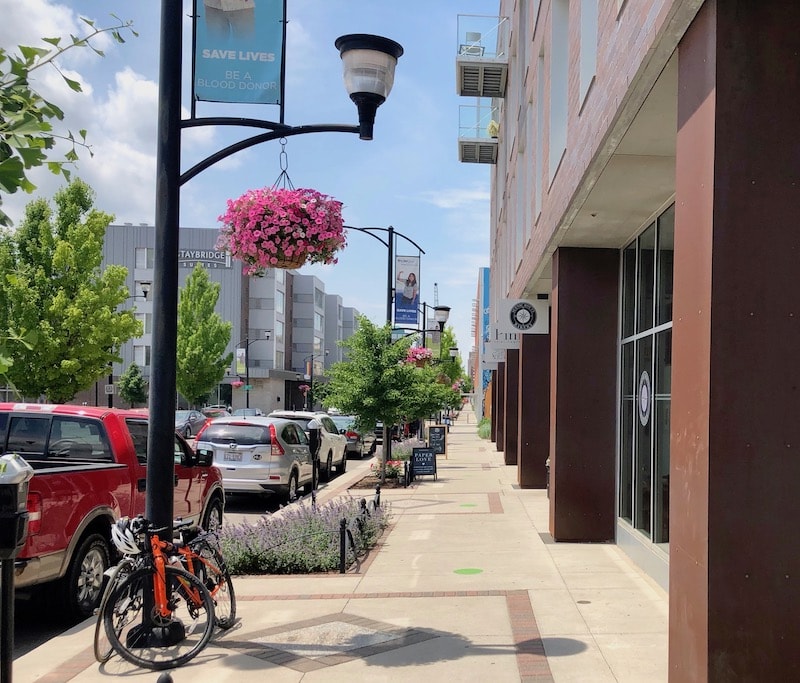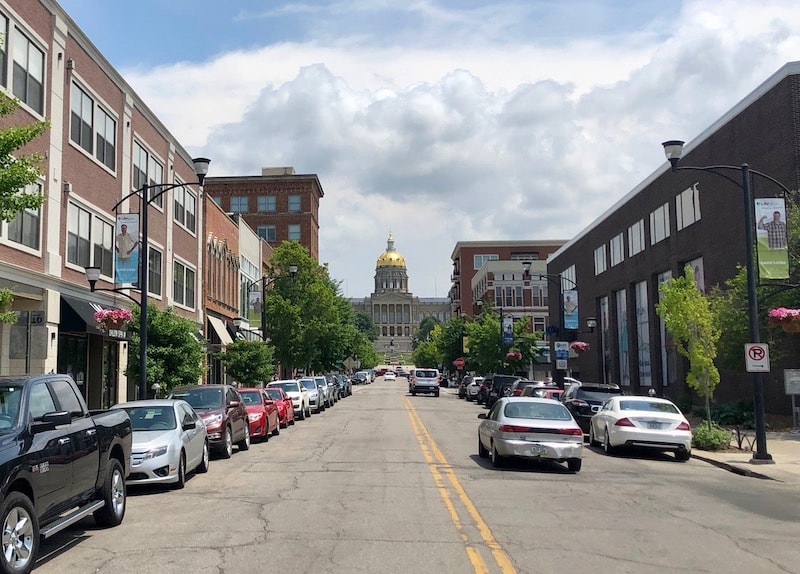Des Moines Postcard: An East Village Model for Downtown KC

Published June 18th, 2019 at 12:15 PM
By Kevin Collison
Downtown Kansas City has certainly come a long way since its ‘haunted house’ days of the early 2000s, but other smaller, regional cities have been pushing hard reviving their downtowns too.
Omaha has been redeveloping its downtown riverfront, Oklahoma City recently opened a downtown streetcar line and Des Moines has been busy creating a mixed-use neighborhood between its central business district and the Iowa capitol building called the East Village.
Yes, if that name sounds familiar, it’s because downtown Kansas City has been pursuing a similar East Village redevelopment plan for 14 years now.
Aside from the opening of the J.E. Dunn headquarters in 2009 and a small, 50-unit apartment project in 2011, the eight-block development site on the east side of Ilus W. Davis Park near City Hall remains dormant.
But if you want a sneak preview of what developer VanTrust Real Estate has in mind for our future East Village–a mixed-use development of apartments, retail and office space–take a three-hour drive up Interstate 35 to Des Moines.

Many of the apartment buildings in the East Village not only look good, but have retail on their first floor.
That city’s East Village is a walkable district of mid-rise apartment buildings, many designed better than what we’ve experienced so far in our downtown, with first floors occupied by stylish shops, bars and restaurants.
Gene Meyer, president of the Greater Des Moines Partnership, said redevelopment of the East Village began with some visionary planning in the early 1990s, followed by brush with the wrecking ball around 2000 that was averted when preservationists protested.
“That started a movement in the East Village with a couple of businesses and coffee shops,” he said. “Then people started visiting and the next step was condos and apartments followed by new restaurants, hotels and then office buildings.”
On a recent Saturday, the East Village was drawing a steady stream of walkers and shoppers at its restaurants, bars and stores, including such upscale national retailers as West Elm and an interior design store featuring high-end Italian furniture.
Meyer said the East Village corridor is about five- to six blocks wide and runs between the Iowa capitol building on Fifth Street and the Des Moines River at First Street. Across the river to the east are the highrises of the central business district.

The sidewalks in the East Village are wide, well-kept and well-designed.
The area has a welcoming pedestrian vibe with wide sidewalks, landscaping, attractive street fixtures and racks for bicycles.
At one of the few surface parking lots, artists created a colorful gate to brighten what in Kansas City often can be a sad fence with a weed patch for a buffer.
The entire area appeared well-kept and the sidewalks, streets and curbs were in good repair. Meyer said many of the apartments have been built over the past few years.
“Living downtown has become extremely popular for all age groups,” he said.
The population of downtown Des Moines has grown from about 7,000 people five or seven years ago to 12,000 today. About 85,000 people work there.
While downtown Kansas City has about 27,000 residents now and around 100,000 workers, metro KC also is three times larger, 2.2 million vs 700,000 in Des Moines.
Over the next couple of years, the East Village is expected to grow to the south and connect with the Court District of downtown Des Moines, an entertainment district utilizing historic buildings.

The East Village district is between the Des Moines River and the Iowa capitol building in the background.
Meyer said another big project will be the renovation of the historic U.S. Courthouse in downtown which is being replaced by a new building.
The next evolutionary item on the downtown Des Moines revival list is activating its riverfront. Meyer said supporters plan to raise $120 million to upgrade its banks and add such attractions as white-water rafting and a zip line across the river.
It’s important to remember that while Kansas City’s downtown revival has been impressive, other regional cities continue to improve their downtowns as well.
Much remains to be done, including finally realizing the vision of our East Village.

The KC East Village redevelopment area occupies eight blocks near City Hall.


